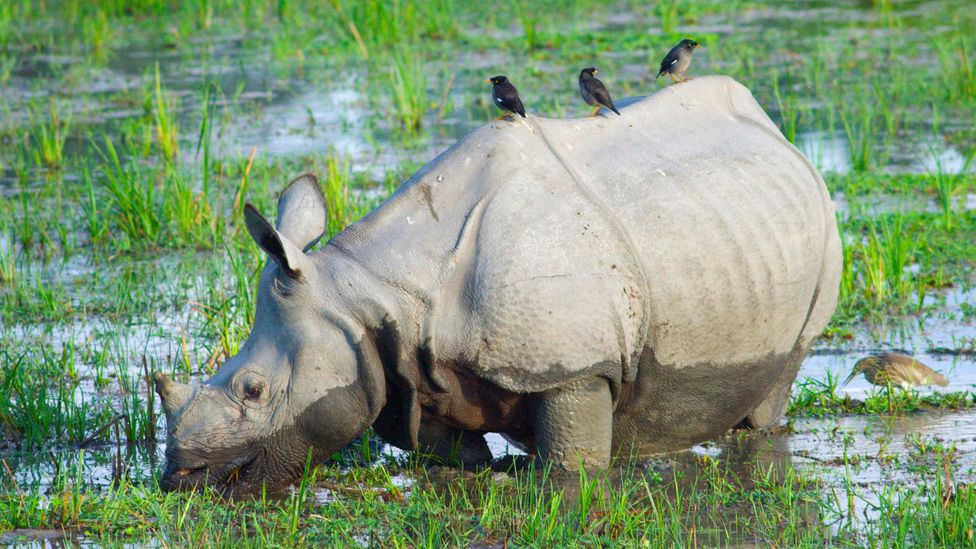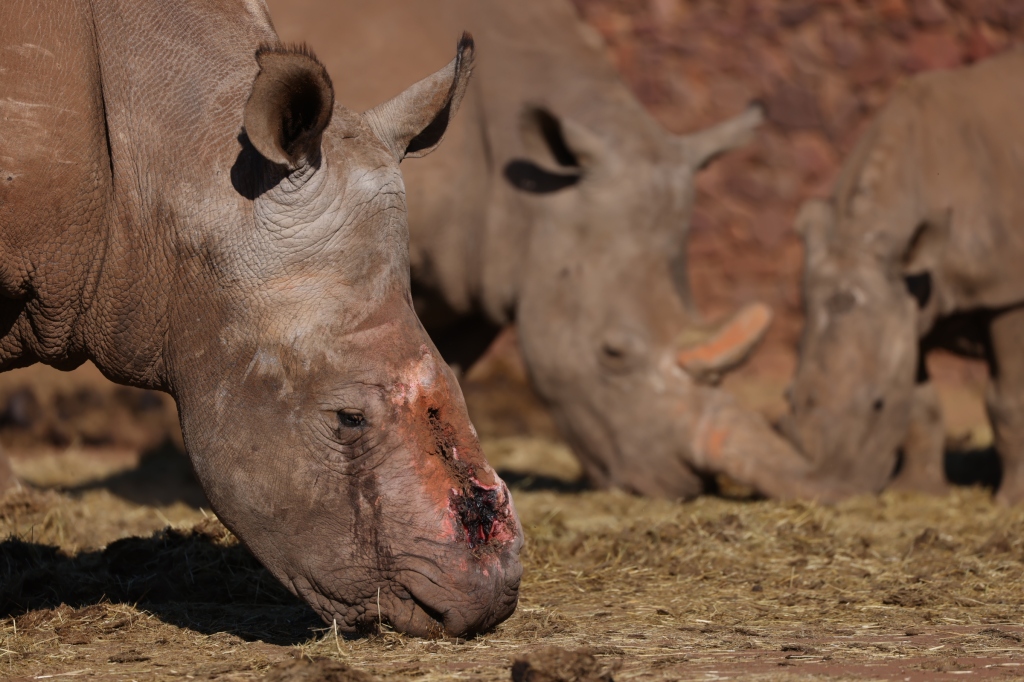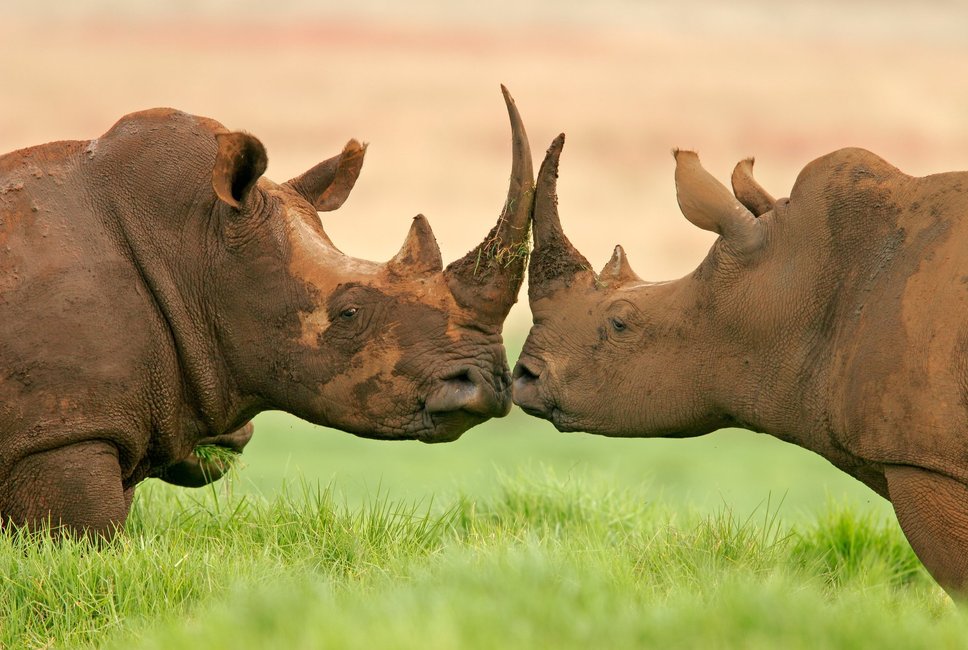
THE MAJESTIC MAMMAL BETWEEN EXTINCTION AND CONSERVATION

When I was in Africa, I didn’t manage to see rhino. It was the only one missing in my BIG FIVE collection, during the safari in Kenya. I really hoped that this beautiful animal will cross my road in one of national parks but unfortunately, they have been hiding, due to the fear from humans and their actions. As we all know, rhinos are big herbivorous mammals that are hunted for their specific horn, used to be traded on illegal wildlife market. Actually, their name rhinoceros originates from Greek language, where the word rhino means nose and ceros is a meaning for horn. It is known that there are about five species and 11 subspecies of rhino, some of them have one horn while some have even two horns.

The African rhino could be black( 5000 animals) and white( 19.000 animals ) , but at the end, they are all somehow grey. In Asia, there are three another species: greater one-horned of India (3.500 animals) Sumatran (80 animals ) and Javan rhinos( about only 60 animals ) The International organisations for wildlife listed black African, Sumatran and Javan rhino as critically endangered by all indicators of IUCN. Their number is extremly dropping down which is causing their population vulnerable and close to final extinction.

The rhinos themselves are very powerful animals so it doesn’t surprise because they are the second largest mammal, after elephant. They could reach about 3500 kg and they share the family of odd-toed ungulates with zebras, horses and tapirs. It is interesting to note that they have very small brain in comparison to their high body but that is not reason to underestimate their brilliant intelligence. The rhinos are smart animals that like to socialise, enjoy the mud and cooling down. They are also very fast and good runners, in spite of their bulk figure, they can run up to 40 miles per hours. On the other side, they don’t see good but they can smell extraordinary which helps them reading the signs in their territorial life in wildness. Those animals communicate in special way, throughs sneezes and poo, also following urine marking all around the road. Each animal has its own and unique urine and due to the marking, it is also the territorial information for others, that might not be the part of herd or some solitary walkers.

Our rhino friends live up to 40 years, if they are unbothered. The female can have the baby about every 3 years and the pregnancy takes 18 months. Thats is why the rhino calves are so cute, especially when they jump happy around their moms. It really breaks my heart to see some little rhinos staying around dying mother, only because she has been hurt by poachers and left alone with young baby. That is the most fragile topic at the moment because the question of rhino protection is all over of the world on rise. They have been around for over 50 million years but humans did all wrong what they have could done to put them on the edge of existence. The poor education in some Asian countries and backward belief that rhino horn can help in folk medicine made this animal being the top target of illegal wildlife activity and wildlife crime:“Because the animals’ horns are used in folk medicine for their supposed healing properties, rhinos have been hunted nearly to extinction. Their horns are sometimes sold as trophies or decorations, but more often they are ground up and used in traditional Chinese medicine. The powder is often added to food or brewed in a tea in the belief that the horns are a powerful aphrodisiac, a hangover cure and treatment for fever, rheumatism, gout and other disorders, according to the International Rhino Foundation.” Their famous horns consist of keratin, that is the main components of human hair and fingernails. The thrilling fact about rhino horns is that they have a lot of calcium and melanin that help the rhinos to deal with climate challenges.

The animals with horn live in so called crashes that is the union of female and her baby. The main boss of the area is usually male that controls all and even let the another males to join, if they are not competitive. I find pretty much funny that females are called cow, the males are being called bulls and baby- calf. Our rhinos are some kind of wild cows with unique horns and personality. They might be not so friendly among each others but their symbiosis with the bird oxpeckers is fascinating. The bird is always sitting on the back of rhino, taking care of insects that is attacking, and informing on alert, if there is any potential danger. That symbiotic relationship is not special only to rhinos and those birds but to many animals in the wilderness. They all learnt that only through the cohabitation and mutual service, they could benefit from each others and standing firmly against the common danger and problems.

Unfortunately, no matter how many efforts put Homo sapiens into the conservation of such a precious animals, there are always those greedy monsters that follow rituals, primitive religions and the rules of money, to ruin our nature and all its regulations. There are always sociopaths, criminals and the social trash that is attacking the ecosystem, wildlife and this Planet, for the sake of egoism and selfish perspective on the future. Those individuals have to be condemned, reported and legally processed. The countries that support any kind of trophy hunting have to be also warned and punished, as well as those who do that. The poaching in the world that is loosing its marvellous big animals is simply no go and something that is embarrassment for the whole civilised world. It is simply enough.

The rhino population has to be actively protected and the legal activity against the wildlife crime has to be empowered and internationally forced, if we still want to recover our only Planet we have, the home we didn’t deserve but, long time ago, we promised we will guard. It is still not too late, it is still a hope that this horned wild cows get a peace and freedom they have right on. This Earth belongs to them too, with or without us.


What a heartwarming article, Sarah !
You tell stories in an amazing way that keeps the reader riveted to your articles from A to Z !
Thank you, Sarah, and bless you for being a True Animal Lover and Advocate ! 🙏
LikeLike
Sarah’s informative and relative article induced me to ponder the emergence of the rhinoceros…
After the mass extinction of 66 million years ago (i.e. asteroid impact), life re-emerged through subterranean and oceanic organisms. Terrestrial organisms began to flourish, and as Sarah mentions, the rhinoceros progenitor first emerged around 50 million years ago.
However, there was another large-scale extinction occurrence (i.e. The Eocene-Oligocene Extinction Event) about 34 million years ago: most of the eradicated species were ocean and freshwater organisms, but the last of the ancient ungulates (i.e. the condylarths) were wiped out, as well.
Around 34 million years ago, a combination of two definitive meteor impacts (i.e. Chesapeake Bay and Siberia) and an increase in volcanic eruptions and emissions caused climate change, etc. The progenitor of the modern rhinoceros emerged a few million years prior to The Eocene-Oligocene Extinction Event, which wiped out most the smaller species of the rhinoceros.
As the surface of the terrestrial planet attained its equilibrium (c. 30 million years ago), the rhinoceros dispersed and split into varying species; although, the North American rhinoceros became extinct c. 5 million years ago. The woolly-rhinoceros thrived in Eastern Asia, about 1 million years. Its Eurasian counterpart lived until the Last Ice Age.
The African rhinoceros first appeared about 6 million years ago, and it is this variety that Europeans denoted and from which we take the nomenclature: the ancient Grecian historian Ἀγαθαρχίδης (Agatharkides, 2nd century BCE) mentioned the rhinoceros in his ‘On the Erythraean Sea’; referring to the creature as ‘ῥῑνόκερως’ (i.e. rhīnókerōs – nose-horned; from ῥῑνός [rhīnós – nose] and κέρας [kéras – horn]).
LikeLike